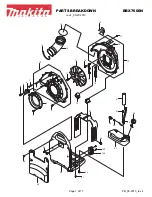
Clock recovery jitter, typical
≥4 GHz models
< 0.25% bit 2 ps rms for PRBS data patterns with 50% transition density.
< 0.25% bit 1.5 ps rms for repeating 0011 data patterns.
Bit rate
Pattern
Jitter (ps rms)
PRBS
0011
3.125 GBd
00110011
2.8 ps
2.3 ps
2.74 GBd
00110011
2.9 ps
2.4 ps
2.35 GBd
00110011
3.1 ps
2.6 ps
2.34 GBd
00110011
3.1 ps
2.6 ps
1.95 GBd
00110011
3.3 ps
2.8 ps
1.57 GBd
00110011
3.6 ps
3.1 ps
100 MBd
00110011
27 ps
27 ps
10 MBd
00110011
252 ps
252 ps
<4 GHz models
20 ps
RMS
+ 1.25% Unit interval RMS for PRBS data patterns.
20 ps
RMS
+ 1.25% Unit interval RMS for repeating 0011 data patterns. (Transition density of 50%).
Jitter increases by 1.4 every time the transition density is reduced by half.
28 ps
RMS
+ 1.25% Unit interval RMS for 25% transition density.
30 ps
RMS
+ 1.25% Unit interval RMS for 12.5% transition density.
Clock recovery tracking
acquisition range
≥4 GHz models
± 2% of requested baud, data rates below 1.25 GBaud.
± 0.25% of requested baud, data rates above 1.25 GBaud.
<4 GHz models
± 5% of requested baud
Minimum signal amplitude needed
for clock recovery, typical
≥4 GHz models
1 division peak-peak up to 1.25 GBd
1.5 divisions peak-peak above 1.25 GBd
Tri-level signals need 50% more pk-pk amplitude
<4 GHz models
1 division peak-peak up to 1.25 GBd
50% more peak-to-peak amplitude is required for tri-level signals.
Serial interface triggering
standards supported
<4 GHz models
I
2
C, CAN, SPI, USB1.1, RS232/422/485/UART
Serial trigger specifications (cont.)
Specifications (MSO70000C/DX, DPO70000C/DX, and DPO7000C series)
MSO70000C/DX, DPO70000C/DX, DPO7000C, MSO5000/B, DPO5000/B Series
67
Summary of Contents for DPO5000 Series
Page 2: ......
Page 6: ......
Page 352: ...Index 340 MSO70000C DX DPO70000C DX DPO7000C MSO5000 B DPO5000 B Series...
















































